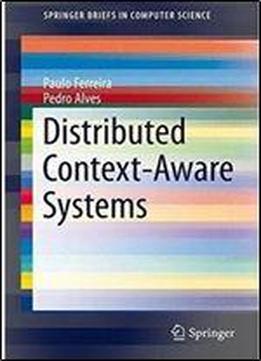
Distributed Context-aware Systems (springerbriefs In Computer Science)
by Paulo Ferreira /
2014 / English / PDF
1.6 MB Download
Context-aware systems aim to deliver a rich user experience by taking intoaccount the current user context (location, time, activity, etc.), possiblycaptured without his intervention. For example, cell phones are now able tocontinuously update a users location while, at the same time, users executean increasing amount of activities online, where their actions may be easilycaptured (e.g. login in a web application) without user consent. In the last decade, this topic has seen numerous developments that demonstrate its relevance and usefulness. Thetrend was accelerated with the widespreadavailability of powerful mobile devices (e.g. smartphones) that include a myriad ofsensors which enable applications to capture the user context. However, there are several challenges that must be addressed we focus on scalability(large number of context aware messages) and privacy (personal data that may be propagated).This book is organized in five chapters starting with an introduction tothe theme raising the most important challenges. Then, chapter two presents several importantdefinitions (establishing a common ground for the following chapters) andtaxonomy. Theseare important to chapter three which describes some of the most relevant distributedcontext-aware systems that can be classified according to the taxonomy. Privacy is addressedin chapter four andchapter fivepresents some important conclusions. The audience for this book is wide researchers, students and professionals ted inthe areas addressed will find the most relevant information regarding scalability and privacy indistributed context-aware systems.











